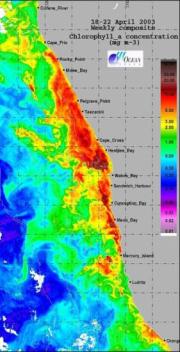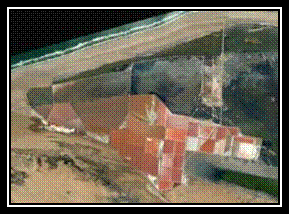Namibia Workshop Presentations
Two Workshops have been held on the 3-5 June 2010 and 29 – 30 April 2013.
2.1 Abstracts of Namibia Workshop (June 2010)
2.1.11 Overview of marine micro-algae in Namibia
Presenter:
Bronwen Currie
The presentation explores an overview of phytoplankton along the Namibian coast in terms of up welling system, productivity, species and the question of change. The Benguela upwelling system is one of the major eastern boundary upwelling systems. Perennial wind-driven coastal upwelling provides a continual supply of nutrients to fuel primary production. Phytoplankton production is particularly intense along Namibia’s central coastal region. The northern Benguela along the Namibian coast provides a high-energy desert coastline with no river runoff and a tiny coastal population, upwelling nutrient rich water promoting abundant phytoplankton - high growth rates for filter feeders; year-round production and unpolluted coastal waters.
Life Fencing includes densely planted row of plants to prevent livestock from entering unwanted areas. This will protect fields from livestock, the seed/oil can be sold for cash, reduce erosion from wind and water and the seed cake can be used as organic fertilizer.
| Upwelling | Phytoplankton |
 |
 |

Longshore south-westerly winds drive upwelling of nutrient-rich water to the surface where primary production is maintained. Wind is strongest at recognized “cells”. The Luderitz upwelling cell is considered to be the most powerful upwelling cell in the world.
The excessive microalgal production along Namibia’s coast falls to the seabottom where intense anaerobic decomposition takes place.
In the surface sediments hydrogen sulphide and methane are formed.
On occasion methane and hydrogen sulphide pervade the water – locally known as “sulphur eruptions”.
 |
| Salt pans along the coast have salinity-specific species (Walvis Bay Salt Pans) |
Most common species of diatoms and dinoflagellates
CENTRAL REGION |
SOUTHERN LüDERITZ REGION |
DIATOMS (in order of abundance) |
|
|
|
DINOFLAGELLATES (in order of abundance) |
|
|
|
 |
| Sakopmund salt pans with high concentrations of Dunaliella salina (reddish-pink colouration) |